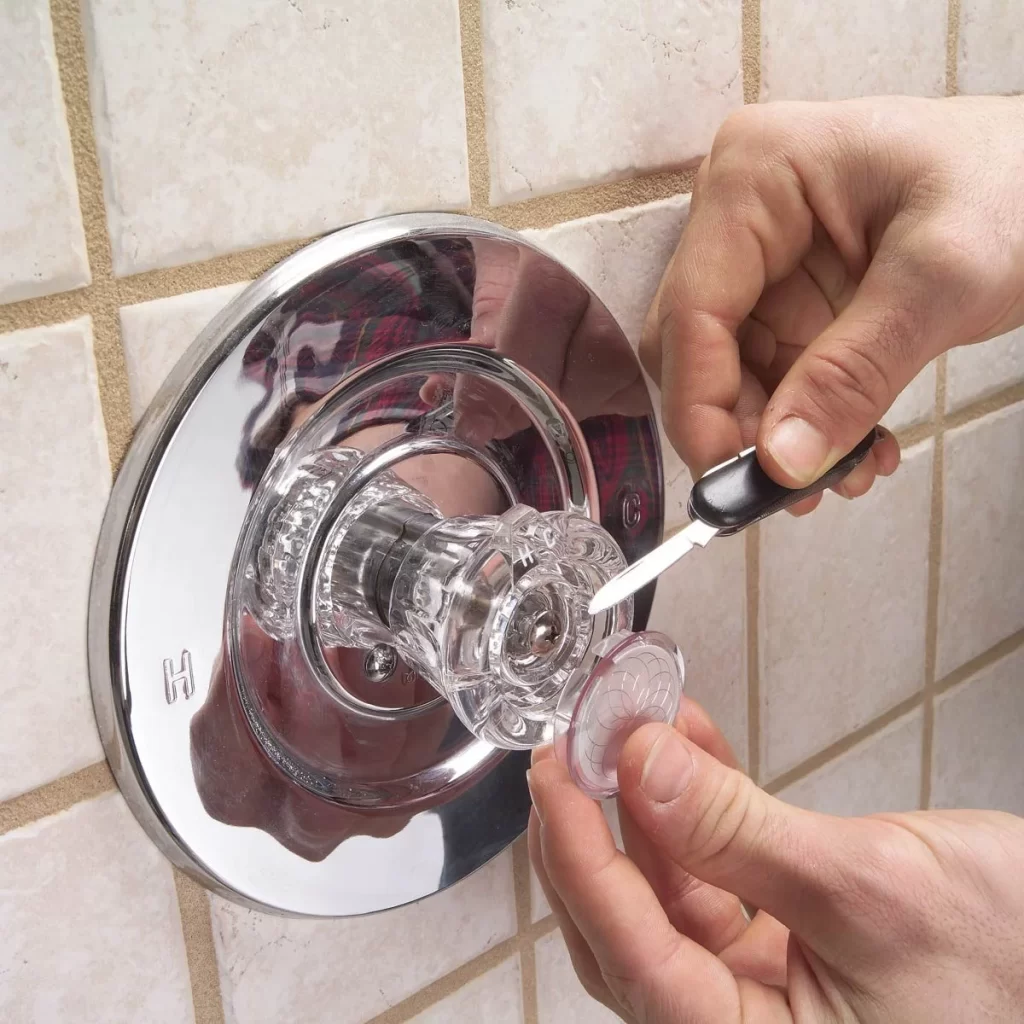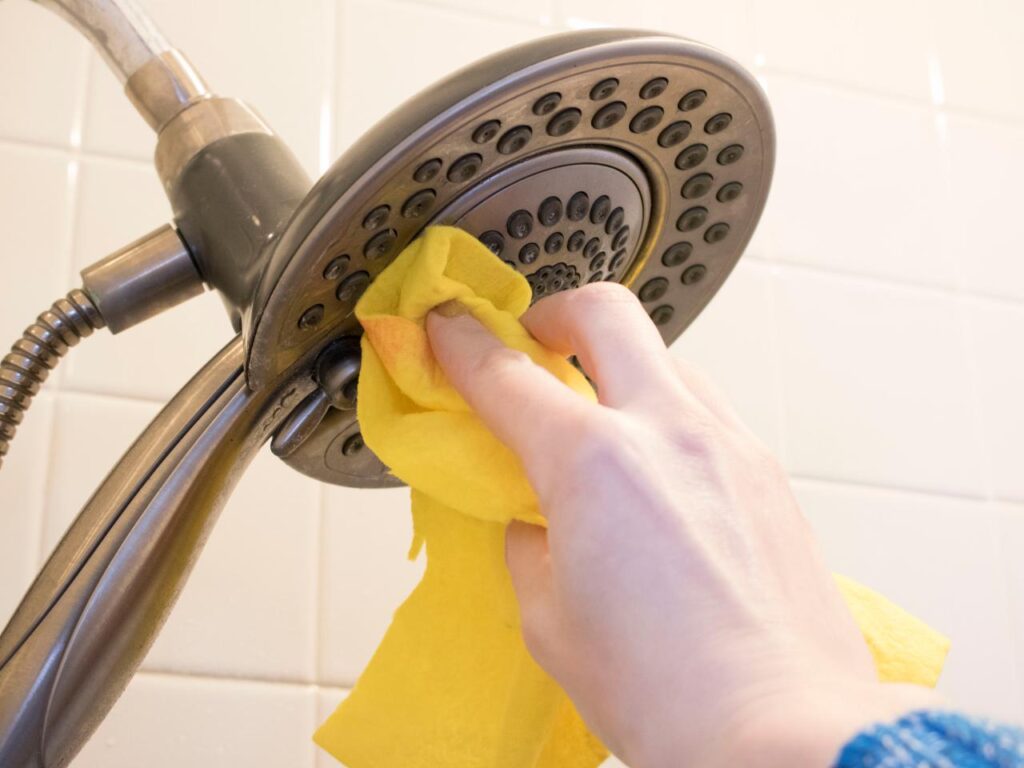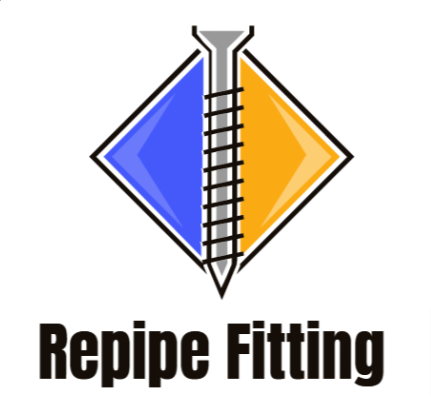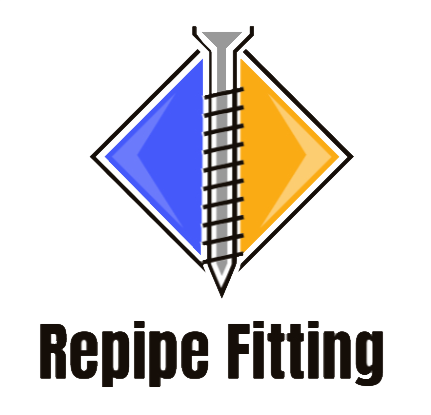Introduction

Hello friend! Let’s dive into the world of plumbing and talk about water pressure in showers. Adequate water pressure is crucial for a refreshing shower experience. It ensures a steady flow of water, allowing you to rinse off soap and shampoo efficiently, making your showering experience enjoyable and revitalizing.
Common Issues Related to Low Water Pressure in Showers
Low water pressure in showers can be a real bummer, and it’s usually due to common issues like clogged aerators, blocked or broken cartridges, or impaired water lines. These issues can turn a relaxing shower into a frustrating chore. But don’t worry, we’re here to help you understand and fix these problems!
Understanding Low Water Pressure in Shower
Definition and Explanation of Low Water Pressure
Low water pressure is when the water that comes out of your showerhead flows at a slower rate than normal. It’s measured in psi (pounds per square inch), and when it’s below the standard level, it affects the flow rate, making your shower less effective and less enjoyable.
How it Affects the Showering Experience
Imagine being under a drizzle when you’re expecting a downpour. Low water pressure can make rinsing off soap and shampoo a tedious task, and it can significantly impact your overall showering experience. It’s like having a car with a slow acceleration; it gets you there, but it takes a bit longer.
Identifying and Fixing Low Water Pressure Issues

Clogged Aerator
A clogged aerator is a common culprit behind low water pressure. It’s located on the faucet spout and can get blocked by minerals or hard water. A simple cleaning or vinegar soak can often resolve this issue, restoring your water flow to its former glory.
Blocked or Broken Cartridge

The cartridge is like the heart of your shower, controlling the water flow and temperature. If it’s blocked or broken, it can cause water pressure problems. A plumbing repair pro can help you with faucet replacement or repair to get your shower back in tip-top shape.
Impaired Water Lines and Pipe Leaks
Impaired water lines and pipe leaks can lead to significant water line damage, affecting the water supply to your shower. Regular technical inspection of water supply lines and valves is crucial to detect any joint malfunction or pipe damage early on.
Malfunctioning Pressure Reducing Valve
This valve controls the water pressure in your household appliances. If it’s malfunctioning, it can cause a water pressure drop, affecting your shower’s flow rate. Adjusting or replacing the pressure relief valve can help in water pressure adjustment and restore the water flow control.
Sediment and Corrosion

Sediment buildup and corrosion in water supply hoses and water heater can restrict water flow, leading to low water pressure. Regular cleaning and mineral removal can prevent sediment buildup and corrosion, ensuring smooth water flow.
Causes of Low Water Pressure in Shower
Overview of Common Causes
Alright, let’s get into the nitty-gritty of what might be causing your low water pressure. The usual suspects are often corroded water pipes, clogged water systems due to sediment or minerals, and the presence of water restrictors. Each of these can significantly impact the water flow rate, turning your refreshing shower into a mere trickle.
How Each Cause Affects Water Pressure
Corroded Water Pipes: Over time, pipes can corrode, leading to restricted water flow and reduced water pressure. It’s like having a highway with multiple lanes closed; things are going to slow down.
Clogged Water Systems: Minerals or hard water can lead to a clogged aerator or blocked cartridge, affecting the water outlet and reducing the flow rate in your shower.
Water Restrictors: These are designed for water conservation but can sometimes be a pain, causing water pressure restriction and affecting your shower experience.
Diagnosing Low Water Pressure
How to Determine if Your Shower has Low Water Pressure
So, how do you figure out if your shower is suffering from low water pressure? It’s simpler than you might think! You can perform a few easy tests to measure the water pressure in gallons per minute (GPM). If the flow rate is below the standard level, you’ve got a water pressure problem on your hands.
Simple Tests to Measure Water Pressure
Bucket Test: Fill a bucket for a minute and measure the amount of water collected. This will give you a rough estimate of the flow rate in GPM.
Faucet Test: Observe the water flow from the faucet spout. If it’s noticeably weaker than usual, there might be an issue with water flow control or a malfunctioning pressure reducing valve.
Solutions to Increase Water Pressure in Shower
Cleaning Your Showerhead:

How Mineral Build-Up Affects Water Pressure
Minerals or hard water can lead to sediment and calcium deposits in aerators, affecting the water outlet and reducing the flow rate. Regular aerator cleaning or a vinegar soak can help in mineral removal and resolve water pressure problems, restoring the refreshing cascade you crave in your showers.
Removing the Water Restrictor:
The Role of Water Restrictors and Their Removal
Water restrictors are designed for water conservation but can sometimes lead to water pressure restriction. Removing them can significantly improve water pressure, but remember, it’s essential to be mindful of water wastage and to use water judiciously.
Replacing Your Shower Hose:

How a Damaged Hose Can Reduce Water Pressure
A damaged or impaired water line can significantly reduce water pressure. Replacing the water supply hoses can help restore normal water pressure, ensuring a steady and robust flow during your showers.
Ensuring Water Shut-Off Valve is Fully Open:
Importance of Fully Open Water Shut-Off Valves
The water shut-off valve controls the water flow to your shower. If it’s not fully open, it can lead to water flow restriction. Ensuring that the valve is fully open can help in water pressure adjustment and improve the flow rate in your shower.
Optimizing Shower Schedule:
Improving Water Pressure by Scheduling Showers
Scheduling showers during times of lower water demand can help in avoiding water pressure drop. Early mornings or late evenings are usually optimal times to enjoy better water pressure and a more revitalizing shower experience.
Seeking Professional Assistance:
When to Seek Help and Benefits of Professional Services
If you’ve tried all the DIY solutions and still experience water pressure problems, it might be time to call in a plumbing repair pro. Professional services can provide a thorough technical inspection, identify any underlying issues like pipe damage or joint malfunction, and offer effective solutions.
Additional Tips and Creative Solutions:
Enhancing Water Pressure with Miscellaneous Tips
- Water Booster Installation: Installing a water booster can help in maintaining a consistent water flow and improving water pressure.
- Regular Maintenance: Regular checks for signs of corrosion, sediment buildup, and leaks can prevent water line damage and maintain optimal water pressure.
- Mindful Water Usage: Being conscious of water usage and avoiding unnecessary water wastage can contribute to better water pressure and conservation.
Conclusion
Recapitulation of the Importance of Resolving Low Water Pressure in Showers
In wrapping up our comprehensive guide, it’s crucial to reiterate the importance of addressing low water pressure in showers. A shower with adequate water pressure is not just a luxury but a necessity for a refreshing and revitalizing experience. Resolving issues like clogged aerators, blocked or broken cartridges, and impaired water lines can significantly enhance your showering experience, allowing you to enjoy the full benefits of a rejuvenating shower.
Encouragement to Try the Provided Solutions and to Seek Professional Help When Necessary
We encourage you to try the solutions provided in this guide, whether it’s cleaning your showerhead to remove sediment and minerals, ensuring the water shut-off valve is fully open, or even scheduling your showers during times of lower water demand. These solutions can help in water pressure adjustment and improve the flow rate, making your showers more enjoyable.
However, if the water pressure problems persist, don’t hesitate to seek the help of a plumbing repair pro. Professional assistance can provide a thorough inspection of water supply lines, valves, and other components, identifying any underlying issues such as pipe damage or malfunctioning pressure reducing valve, and offering effective and lasting solutions.
FAQ
How can I measure my shower’s water pressure?
Use a measuring jug and place it underneath the shower. If it takes more than six seconds to fill up a one-liter jug at full power, you likely have low water pressure.
Is it legal to remove the water restrictor from the showerhead?
It is generally legal unless otherwise stated, but it may increase your water bill.
Can cleaning the showerhead really improve water pressure?
Yes, cleaning the showerhead can remove mineral build-up and other blockages, improving water flow and pressure.
When should I seek professional help for low water pressure in my shower?
If the DIY solutions fail to resolve the issue, or if you suspect underlying plumbing issues, it is advisable to seek professional assistance.

